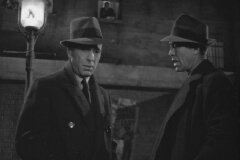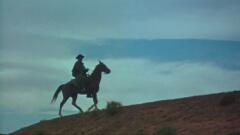AUTEUR
French for “author”. Used by critics writing for Cahiers du cinema and other journals to indicate the figure, usually the director, who stamped a film with his/her own “personality”. Opposed to “metteurs en scene” who merely transcribed a work achieved in another medium into film. The concept allowed critics to evaluate highly works of American genre cinema that were otherwise dismissed in favor of the developing European art cinema.
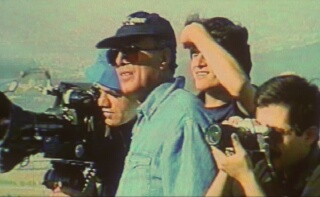
DIEGESIS
The diegesis includes objects, events, spaces and the characters that inhabit them, including things, actions, and attitudes not explicitly presented in the film but inferred by the audience. That audience constructs a diegetic world from the material presented in a narrative film. Some films make it impossible to construct a coherent diegetic world, for example Last Year at Marienbad (L’année dernière à Marienbad, Alan Resnais, 1961) or even contain no diegesis at all but deal only with the formal properties of film, for instance Mothlight (Stan Brakhage, 1963). The “diegetic world” of the documentary is usually taken to be simply the world, but some drama documentaries test that assumption such as Land Without Bread (Las Hurdes, Luis Buñuel, 1932).
Different media have different forms of diegesis. Henry V (Lawrence Olivier, England, 1944) starts with a long crane shot across a detailed model landscape of 16th century London. Over the course of its narrative, the film shifts its diegetic register from the presentational form of the Elizabethan theater to the representational form of mainstream narrative cinema.
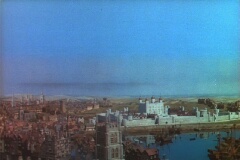 |
 |
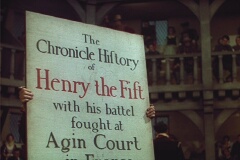 |
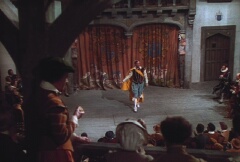 |
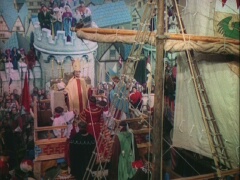 |
 |
EDITING
The joining together of clips of film into a single filmstrip. The cut is a simple edit but there are many other possible ways to transition from one shot to another. See the section on editing.

FLASHBACK FLASHFORWARD
A jump backwards or forwards in diegetic time. With the use of flashback / flashforward the order of events in the plot no longer matches the order of events in the story. Citizen Kane (Orson Welles, 1941) is a famous film composed almost entirely of flashbacks and flashforwards. The film timeline spans over 60 years, as it traces the life of Charles Foster Kane from his childhood to his deathbed — and on into the repercussions of his actions on the people around him. Some characters appear at several time periods in the film, usually being interviewed in the present and appearing in the past as they tell the reporter of their memories of Kane. Joseph Cotten, who plays Kane’s best friend, is shown here as an old man in a rest home (with the help of some heavy make-up) and as a young man working with Kane in his newspaper.
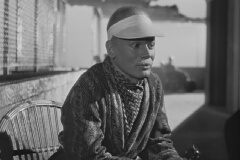

FOCUS
Focus refers to the degree to which light rays coming from any particular part of an object pass through the lens and reconverge at the same point on a frame of the film negative, creating sharp outlines and distinct textures that match the original object. This optical property of the cinema creates variations in depth of field — through shallow focus, deep focus, and techniques such as racking focus. Dziga Vertov’s films celebrated the power of cinema to create a “communist decoding of reality”, most overtly in Man with the Movie Camera (Chelovek s kinoapparatom, USSR, 1929).
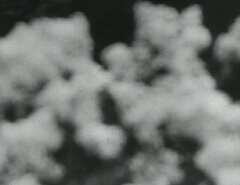
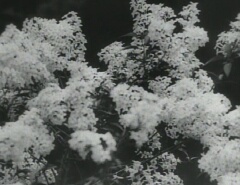
GENRES
Types of film recognized by audiences and/or producers, sometimes retrospectively. These types are distinguished by narrative or stylistic conventions, or merely by their discursive organization in influential criticism. Genres are made necessary by high volume industrial production, for example in the mainstream cinema of the U.S.A and Japan.
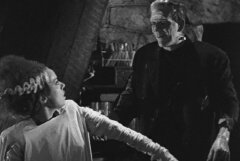 |
|
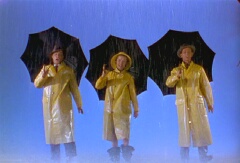 |
|
MISE-EN-SCENE
All the things that are “put in the scene”: the setting, the decor, the lighting, the costumes, the performance etc. Narrative films often manipulate the elements of mise-en-scene, such as decor, costume, and acting to intensify or undermine the ostensible significance of a particular scene.
STORY / PLOT
Perhaps more correctly labelled fabula and syuzhet, story refers to all the audience infers about the events that occur in the diegesis on the basis of what they are shown by the plot — the events that are directly presented in the film. The order, duration, and setting of those events, as well as the relation between them, all constitute elements of the plot. Story is always more extensive than plot even in the most straightforward drama but certain genres, such as the film noir and the thriller, manipulate the relationship of story and plot for dramatic purposes. A film such as Memento (Christopher Nolan, 2000) forces its audience to continually reconstruct the story told in a temporally convoluted plot.
SCENE / SEQUENCE
A scene is a segment of a narrative film that usually takes place in a single time and place, often with the same characters. Sometimes a single scene may contain two lines of action, occurring in different spaces or even different times, that are related by means of crosscutting. Scene and sequence can usually be used interchangeably, though the latter term can also refer to a longer segment of film that does not obey the spatial and temporal unities of a single scene. For example, a montage sequence that shows in a few shots a process that occurs over a period of time.
SHOT
A single stream of images, uninterrupted by editing. The shot can use a static or a mobile framing, a standard or a non-standard frame rate, but it must be continuous. The shot is one of the basic units of cinema yet has always been subject to manipulation, for example stop-motion cinematography or superimposition. In contemporary cinema, with the use of computer graphics and sequences built-up from a series of still frames (eg. The Matrix), the boundaries of the shot are increasingly being challenged.

